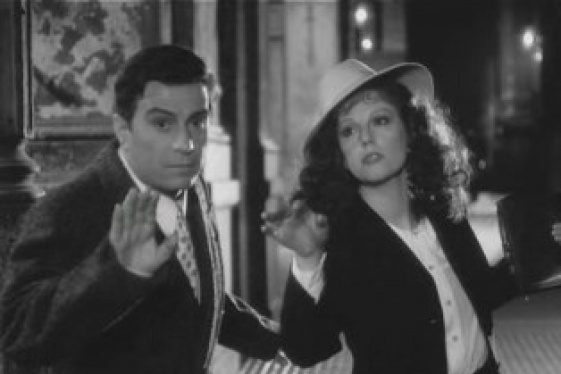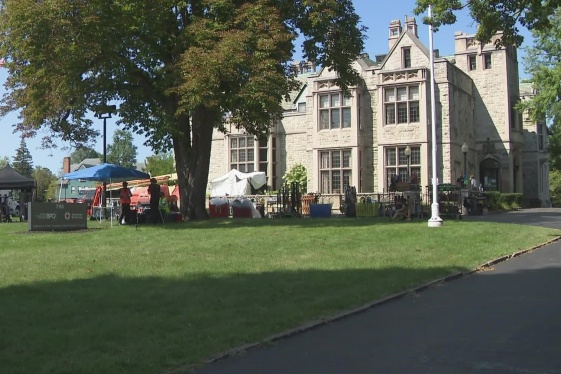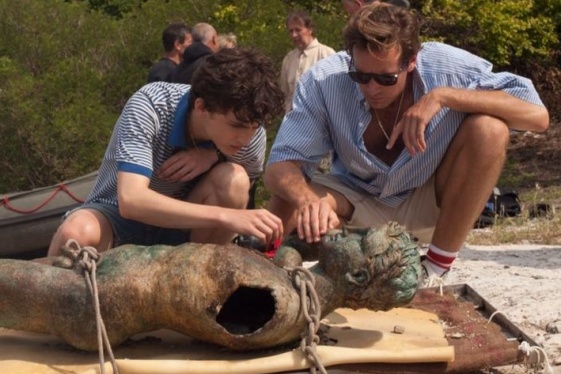

BY: Edoardo Peretti
Today we celebrate a “splendid” fifty-year-old: in October 1975, a film hit Italian theaters that would soon become a true cult classic—Fantozzi, directed by Luciano Salce and starring Genoese comedian Paolo Villaggio, the creator of the character who, before hitting the big screen, had already been brought to life on television and in a series of books.
Fantozzi is an utterly average office worker (more precisely, an accountant), a constant victim of mistreatment, cowardice, and injustice, relentlessly targeted by the darkest bad luck—which spares neither his professional nor his personal life, as evidenced by his rather unremarkable wife and daughter.
His anonymity and the utter indifference that both the world and fortune show him are symbolized, for example, by how his name is constantly mangled or forgotten (Fantozzi becomes Fantocci, Fantossi, Pupazzi…).
The accountant who stars in what would become a flourishing film saga (between 1975 and 1999, ten films would feature him as the lead—growing increasingly repetitive, though never entirely without effective gags, culminating in the final, almost universally panned Fantozzi 2000: La Clonazione) is arguably the most important and well-known symbol of the “loser” and the inept man produced by Italian cinema. He is one of the best representations of the average man: a victim not only of injustice, but also of conformism—and, most crucially, partially complicit in those very injustices, which he sees as the only path to achieving the goals set by the work world and by everyday desires (such as the approval of his current boss or a date with the office's most “desirable” woman, the legendary Miss Silvani).
Fantozzi is portrayed as a mediocre man forced to be petty, yet still capable—at times—of brief flashes of humanity when he's pushed too far. Still, he’s never able to truly rebel or become fully aware: a symbol, both as victim and accomplice, of servility. A bleak outlook, yes—but not without a hint of affection and a certain pity.
The weapon used to portray the character and his world is heightened grotesque, primarily relying on slapstick physical comedy—used here, as it has been since the days of Buster Keaton, as a way to highlight the world’s hostility. This is combined with a unique, now iconic language: a conformist, grammatically mangled Italian full of incorrect subjunctives, emblematic (in the mid-1970s) of a linguistic unification process that was underway but not yet complete or deeply rooted.
The grotesque is heightened by the fact that the film isn’t driven by a deep plot, but rather by a series of sketches—a choice that amplifies both its comedic and satirical effectiveness. This style draws inspiration from two different sources: the first is modern literature focused on the individual’s struggle and alienation in a mass society. Villaggio was clearly inspired by Kafka’s paradoxes and Gogol’s irony—Gogol’s short story The Overcoat essentially presents a proto-Fantozzi.
On the other hand, Salce’s film represents an extreme take on an important tradition in Italian cinema: the so-called commedia all’italiana, a genre born during the economic boom years and marked by a critical, often bittersweet eye—sometimes even bordering on the dramatic—on the era’s contradictions, imbalances, and illusions. Fantozzi, in particular, portrays people either unable to play by the dominant rules or incapable of achieving goals that seemed within everyone’s reach.
As the boom years gave way to the downturn and crises of the following decade, commedia all’italiana evolved, becoming darker, more dramatic, and increasingly grotesque. Fantozzi—directed, not coincidentally, by one of that golden era’s standout filmmakers (Salce also directed La voglia matta and Il federale)—is one of the most well-known and powerful examples of that tonal shift.
In Fantozzi, laughter is constant, and countless scenes and catchphrases have entered Italian pop culture. But it’s laughter that, upon more conscious viewing, catches in the throat. It doesn’t quite amuse in a carefree way—it leaves a deeper sense of unease and anxiety. It’s comedy that goes beyond social satire to take on existential weight.
This is especially true in the first two films—Fantozzi and Il secondo tragico Fantozzi, both directed by Salce in 1975 and 1976. In the later films of the saga, the comedy becomes more repetitive and superficial, gradually losing the bitter edge that once made it so memorable.
You may be interested
-
New York Italians Movie Night: "C'eravamo ta...
Dear Friends, New York Italians in collaboration with Fordham University, Department...
-
'A League of Their Own' director Marshall dea...
Actress and director Penny Marshall, whose love of sports made her a regular in the Los An...
-
'Avengers: Infinity War' Directors Inducted I...
The Russo Brothers were a pair of the Marvel Cinematic Universe's best directors even prio...
-
'Boardwalk Empire' Season 5 News: Vincent Pia...
Recently, actor Vincent Piazza, who plays up-and-coming gangster Lucky Luciano on the show...
-
'Bottom of the 9th': Film Review
With films like Two Family House and City Island, director Raymond De Felitta found easy c...
-
'Buongiorno Papà' vince Nice Festival Usa
'Buongiorno papà' di Edoardo Leo, film sui quarantenni single in Italia, interpretato da R...
-
'Cabrini' film features nearly 40 Buffalo loc...
Parts of Western New York have transformed into movie sets as crews filming "Cabrini" take...
-
'Call Me by Your Name' and 'The Shape of Wate...
The Los Angeles Film Critics Assn. had lots of love for Luca Guadagnino’s “Call Me by Your...













